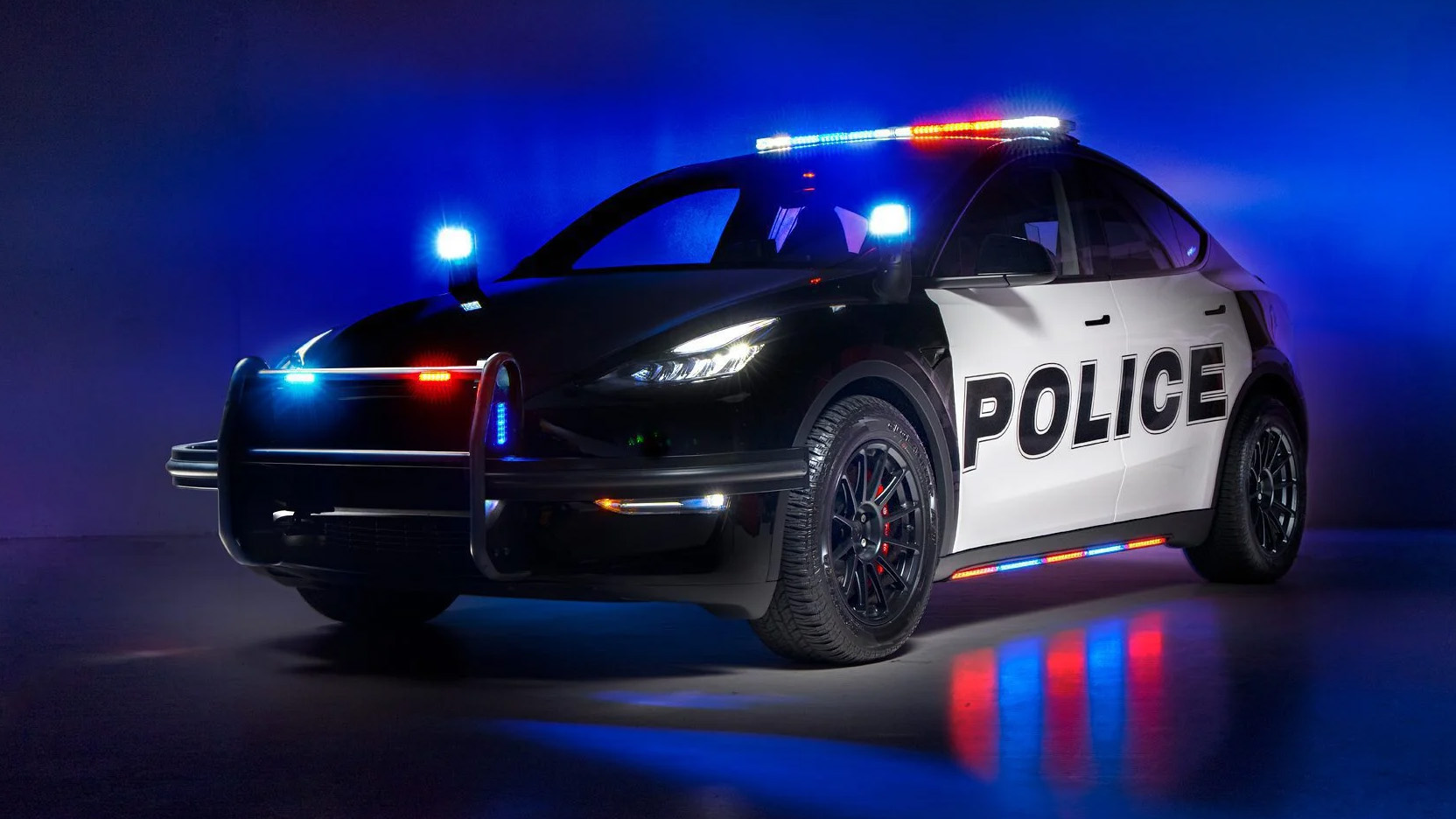

In 2020, California governor Gavin Newsom signed a bill banning the sale of new gasoline- and diesel-powered cars by 2035. The law also applies to the state’s police departments, but it doesn’t sound like Tesla will be getting a large share of the cop car market. Several high-ranking officials from police departments in Northern California said that the Tesla models they’ve tested are turning out to be terrible patrol cars.
Speaking to SFGate, Ukiah Police Department Chief Cedric Crook explained his department bought a pair of Model 3 sedans to use as patrol cars in August 2024. The bill amounted to nearly $150,000, including the purchase price and about $35,000 in modifications. It’s not just lights, sirens, and a big bull bar: patrol cars also require a partition, a gun rack, ballistic panels, and communication equipment like a police radio.
Crook said that there’s only one company capable of turning the Model 3 into a patrol car: Unplugged Performance, which runs a fleet division called UPfit and also sells a range of performance-oriented parts for Tesla models. The company told Crook that preparing the two EVs for duty would “take months,” according to the report. In contrast, the list of third-party shops that turn Ford and Chevrolet models into patrol cars is long.
Crook also argued that the Model 3’s basic design makes it ill-suited for police duties. He noted that some officers aren’t able to comfortably get in and out of the Model 3 while wearing their duty belt, and he pointed out that the back seat is only big enough to carry one prisoner. Arresting several suspects would consequently require using several cars. He cited driving range as a concern as well: the idea of waiting for a charge at a Supercharger station with a dangerous prisoner in the back doesn’t sit well with him. “I’m not ready to put an officer in a Tesla,” he concluded.
The two EVs are already paid for, however, so they’ll be joining the Ukiah Police Department—but as vehicles for the administrative staff.
Chief David Norris of the Menlo Park Police Department echoed Crook’s comments. He ordered three Model Y crossovers, which were designed about six miles away from Menlo Park in Palo Alto, and had them modified into patrol cars as part of a pilot program. His officers came to many of the same conclusions as their colleagues in Ukiah: while they appreciated the quick acceleration and the steering, they complained about “small interior space, ‘smart car’ features, and low vehicle profile limiting maneuverability (e.g., jumping curbs, off-road use).” That’s telling, as the Model Y is marketed as a bigger and more spacious alternative to the Model 3; it’s even optionally available with a pair of third-row seats.
Interestingly, the officers who tested the Model Ys reported that patrol duty occasionally catches Autopilot off-guard. They mentioned a delay after shifting into drive and noted that the system sometimes stops the car if an officer is pulling off to the side of the road, presumably because it assumes the driver has lost control. Issues with Tesla’s user interface, which relies almost exclusively on the touchscreen, were also brought up.

That doesn’t mean EVs can’t be used as patrol cars. Chief Neil Cervenka of the Fort Bragg Police Department has had much better luck with the five Ford F-150 Lightning trucks he’s purchased since 2022, as it seems a more natural fit for police duty. Storing gear isn’t a problem, thanks to the frunk and bed, plus the latter is well-suited for hauling away misplaced shopping carts and bikes. Cervenka added that incentives have made the switch to EVs cost-effective, and that he expects the fleet to be all-electric before 2027.
Of course, the EV market will change significantly between now and 2035, when California’s police departments are forced to go electric. Tesla could launch a purpose-designed patrol car, for example. But while that’s an expensive endeavor, one of Crook’s concerns sounds fairly cheap and easy to address. He said the police academy taught him to hide behind the engine block in a firefight, which is impossible in an EV.
Bulletproof frunk, anyone?
Got tips? Send ’em to tips@thedrive.com